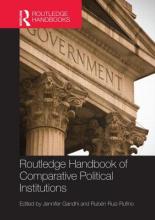The new institutionalism arose in the 1980s, in reaction to narrowly individualistic approaches in economics, political science, and sociology. The new institutionalists claim that rules, norms, and customs — often arbitrary and artificial — structure human interaction and can explain major macro‐outcomes and long‐term secular change. Consideration of how institutions influence individual behavior and collective action has a distinguished history. While earlier institutionalists flirted with the origins of order, secularism, and markets, the new economic institutionalists have fashioned a rigorous analytic approach to explain real world variation in the quality of institutions, state capacity, democracy, economic development, and the welfare state. This paper examines how the classical political economists provided the scaffolding necessary to address the puzzle of underdevelopment. They imagined new worlds where none had existed before, and outlined foundations for secular authority, liberalism and capitalism, despite the fact that religiously justified rule, disorder, absolutism, and illiberalism were the only game in town. While the most recent economic institutionalists stand on their shoulders, they use state‐of‐the art models and methods to explain why underdevelopment remains pervasive — despite the now widespread knowledge that institutions account for a large share of the variation in the outcomes that constitute development.
THE NEW ECONOMIC INSTITUTIONALISM IN HISTORICAL PERSPECTIVE - ResearchGate. Available from: http://www.researchgate.net/publication/272491974_THE_NEW_ECONOMIC_INSTITUTIONALISM_IN_HISTORICAL_PERSPECTIVE [accessed Apr 27, 2015].
Institutional Analysis in Historical Perspective
Margaret Levi and Victor Menaldo. “Institutional Analysis in Historical Perspective." in Handbook of Comparative Political Institutions, edited by Jennifer Gandhi and Ruben Ruiz-Rufino, Routledge Press, 2015.
